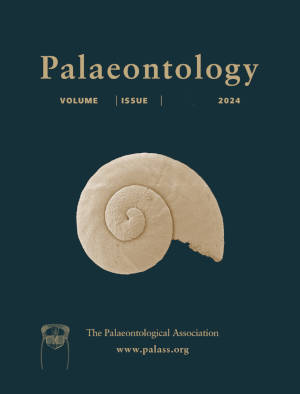Article: Elevated evolutionary rates of biting biomechanics reveal patterns of extraordinary craniodental adaptations in some herbivorous dinosaurs
Publication: Palaeontology
Volume:
67
Part:
1
Publication Date:
2024
Article number:
e12689
Author(s):
Callum Kunz, and Manabu Sakamoto
Abstract
Abstract Adaptation to specialist ecological niches is a key innovation that has contributed to the evolutionary success of many vertebrate clades, underpinning the acquisition of diverse skull morphologies. Dinosaurs, which dominated Mesozoic terrestrial faunas, acquired herbivory multiple times, and evolution of these herbivorous adaptations is linked to drastic changes in dental and craniomandibular functional morphology, yet whether changes in functionally relevant phenotypic traits occurred more rapidly in herbivorous lineages compared to in carnivorous lineages remains largely untested in a statistical phylogenetic framework. Here, we infer rates of phenotypic evolution using phylogenetic variable-rate models on relative biting edge (tooth row) lengths of 107 dinosaur taxa to test the hypothesis that the acquisition of herbivory is associated with rapid changes in mandibular biomechanics. We find elevated rates of biomechanical evolution in theropods with foreshortened and beaked skulls (Oviraptorosauria, Limusaurus), as well as in ceratopsians and Diplodocus. The presence and position of a reduced tooth row and increased jaw efficiency unite these high-rate lineages, indicating selection for greater efficiency in biting biomechanics. Large departures from the isometric scaling of these mandibular characteristics helps explain the differences in evolutionary rates in these clades and those of other herbivorous theropods (Therizinosauria, Ornithomimosauria). Additionally, we hypothesize that extreme ontogenetic changes within species lifetimes may be behind some instances of branch-wise elevated rates. Thus, we show how exceptional rates of biomechanical evolution can reveal signatures of ecological adaptations within dinosaur lineages as well as within-species ontogenetic sequences.
